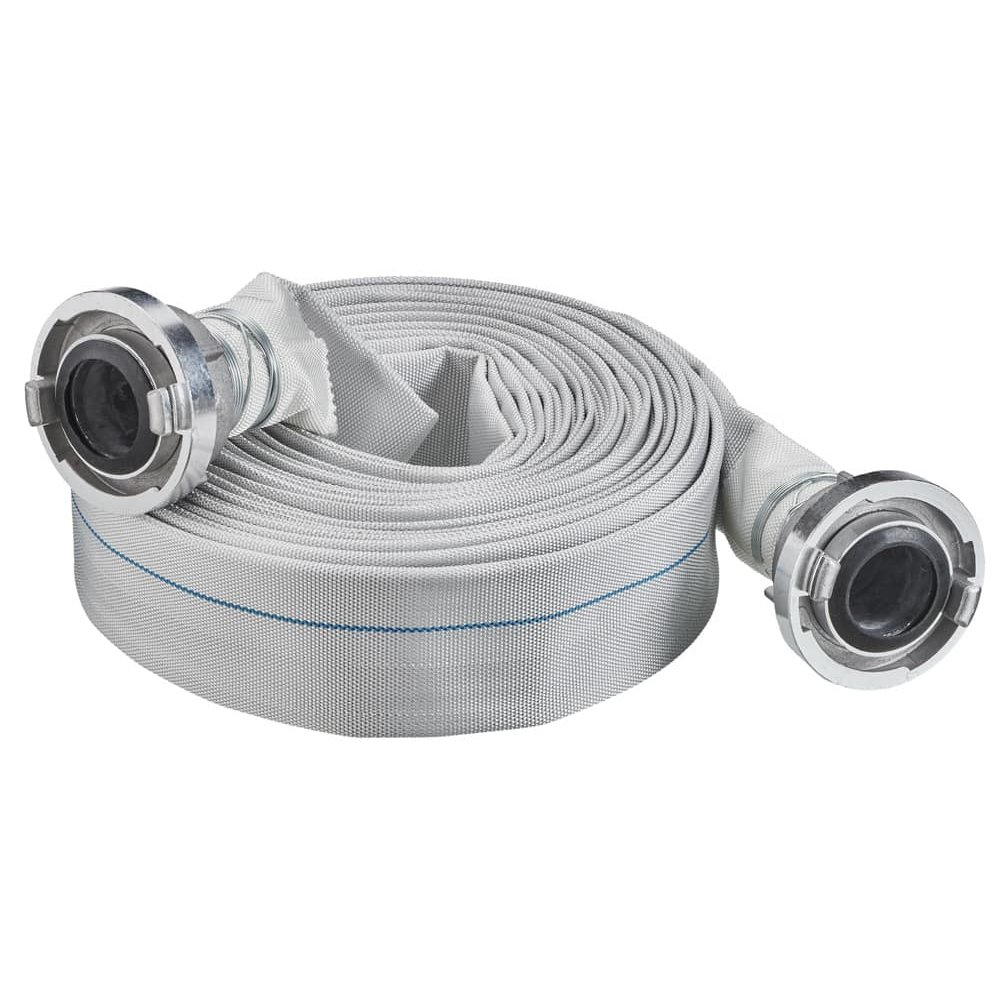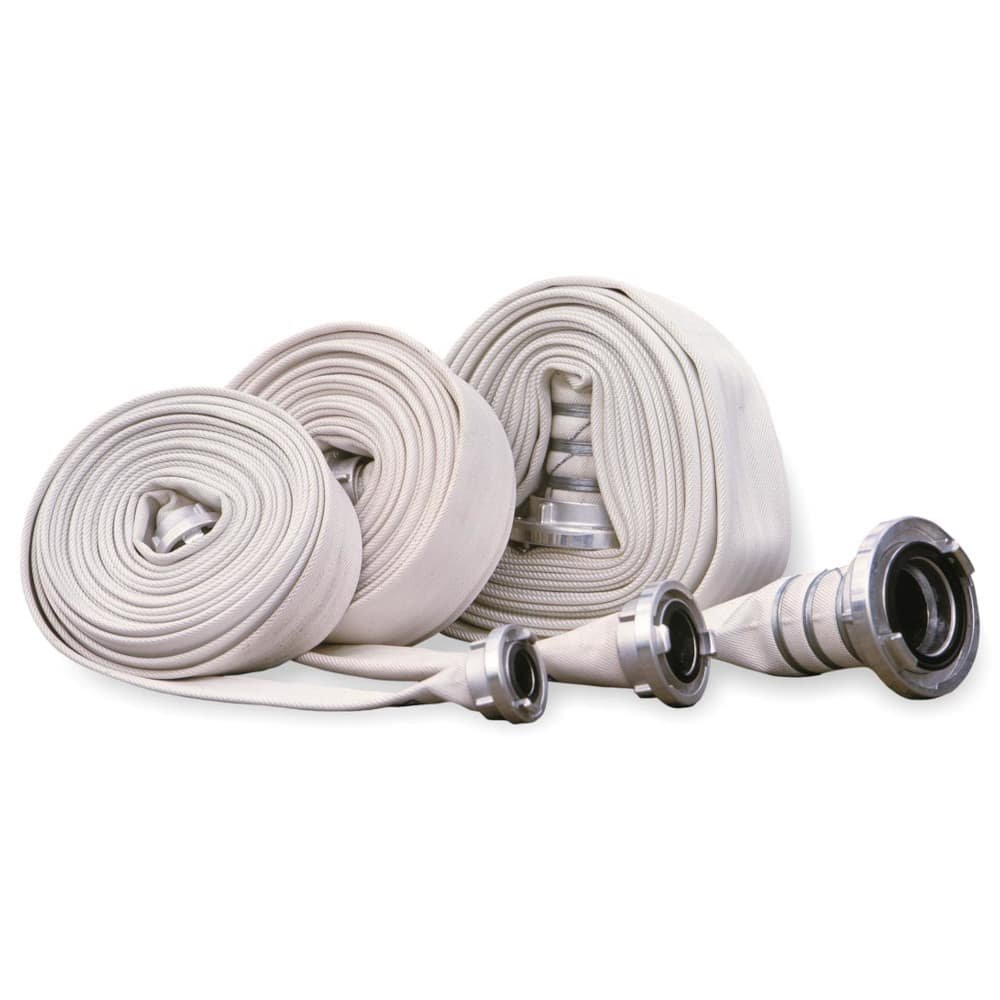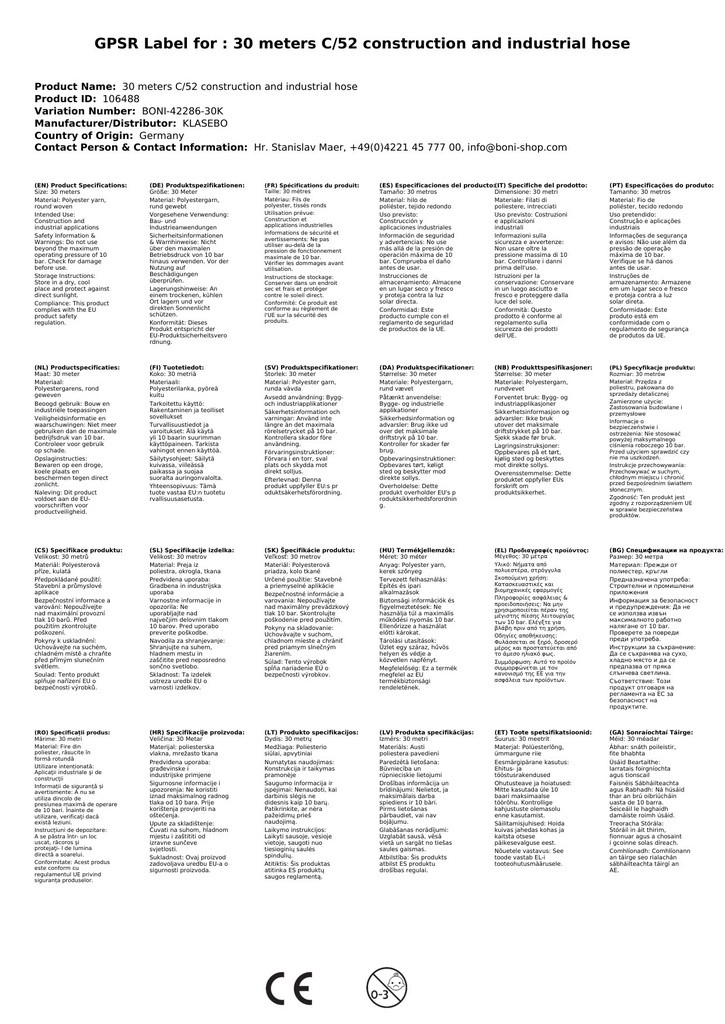30 Meter C/52- Construction and Industrial Hose
Length: 30 m
Color: outside white
Material: Outside: Polyester yarn, round woven, chain double-twisted
Operating pressure: 10 bar
- with Storz suction couplings
- Wire binding
- uncoated
- Protective sleeve to prevent chafing at the hose coupling
User information:
This manual must be read carefully before first use and followed during use.
1. General information about flat or pressure hoses
Pressure hoses primarily serve the purpose of liquid transfer, especially water.
However, they can also be used for draining wastewater or similar. They are made of round-woven synthetic fibers (in this case polyester) and are coated inside.
A significant advantage of flat hoses is their low weight and flexibility, which makes them easy to fold and transport when not under pressure.
2. During use
Due to their primary purpose and predominant areas of use, flat hoses are subject to high external influences that can shorten their lifespan.
For optimal service life, the following is recommended:
- Do not exceed the maximum operating pressure.
- When laying out the hoses, ensure they are unrolled if possible. Otherwise, always pull flat. This can prevent the hose from dragging on the edge on the ground and immediately damaging the hose cover.
- Avoid rough surfaces if possible.
- Do not drag hoses over sharp, pointed objects and/or surfaces.
- Never drop hose ends or fittings, as this can lead to damage to the lugs or the fittings themselves.
- Do not drag or let hoses under pressure drag on the ground, as the resulting abrasion can damage the hose cover. Vibrations of hoses under pressure can be reduced or absorbed using accessories, e.g., burlap, tarps, or bandages.
- If hoses are to be used at transitions, hose bridges should be used. Hoses should never be driven over or stepped on.
- Keep hoses away from acids, chemicals, and hazardous substances if possible.
3. After use:
To ensure the longevity of the hoses, the following instructions should be followed after use:
- To remove the remaining liquid medium from the hose, the hose should be lifted over the shoulder. Never step on the hose!
- Clean hoses from deposits inside the hose (sand, etc.), i.e., rinse them out. They should then be dried (otherwise mold/lime can deposit inside the hose, which can permanently damage the core).
- Clean the hose cover from external dirt.
- Hoses should never be stored in a damp condition.
- Check fittings for integrity.
- Store hoses rolled up if possible.
- When rolling up, ensure that the hoses do not drag on rough surfaces as when unrolling.







